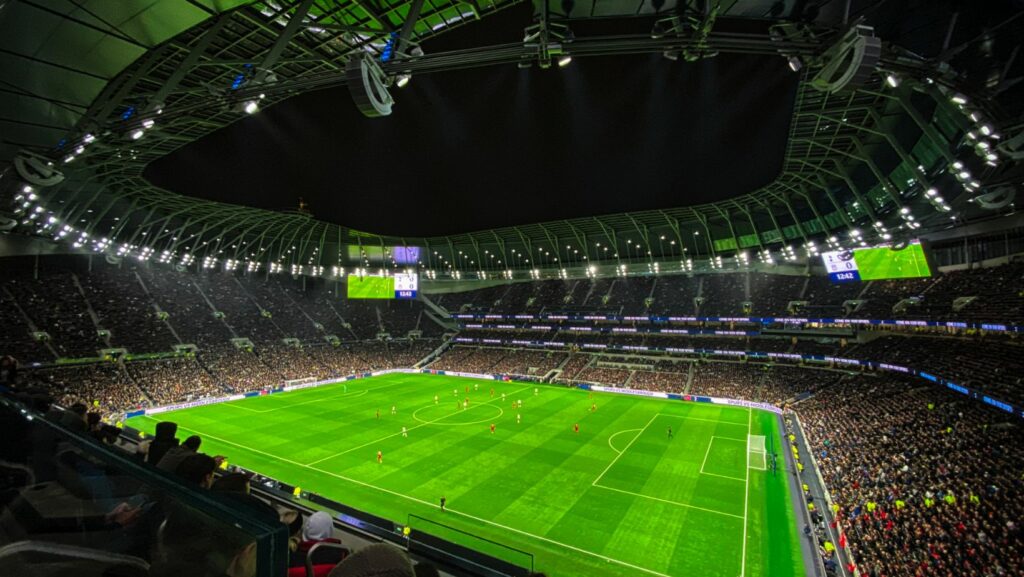Football fans around the world share a common passion, but few realize how geography shapes the sport. A football teams map offers a fascinating glimpse into where teams are based, revealing regional rivalries and local loyalties. From the bustling cities of Europe to the remote towns in South America, these maps highlight the diverse landscapes that host the world’s most beloved teams. Understanding the geographical distribution of football teams can enhance a fan’s appreciation of the sport. It sheds light on why some matches are more intense and how historical, cultural, and economic factors influence team locations.
Football Teams Map
 A football teams map offers a visual representation of where teams are based, highlighting regional dynamics and local rivalries. It provides insight into the geographical aspects that shape the sport. Football teams are distributed across various regions, often reflecting historical and socio-economic factors. In Europe, leagues like the Premier League or La Liga feature teams from major cities and towns. In the United States, Major League Soccer (MLS) teams span from the West Coast to the East Coast, covering key metropolitan areas. Analyzing this spread helps fans grasp the regional diversity present within leagues and the economic hubs driving team locations. Regional popularity significantly influences the number and success of football teams in an area. In football-obsessed regions like South America, countries such as Brazil and Argentina host numerous clubs with passionate fanbases. In contrast, regions with emerging football interests, like East Asia, are experiencing growth in team numbers and audience.
A football teams map offers a visual representation of where teams are based, highlighting regional dynamics and local rivalries. It provides insight into the geographical aspects that shape the sport. Football teams are distributed across various regions, often reflecting historical and socio-economic factors. In Europe, leagues like the Premier League or La Liga feature teams from major cities and towns. In the United States, Major League Soccer (MLS) teams span from the West Coast to the East Coast, covering key metropolitan areas. Analyzing this spread helps fans grasp the regional diversity present within leagues and the economic hubs driving team locations. Regional popularity significantly influences the number and success of football teams in an area. In football-obsessed regions like South America, countries such as Brazil and Argentina host numerous clubs with passionate fanbases. In contrast, regions with emerging football interests, like East Asia, are experiencing growth in team numbers and audience.
Key Factors in Football Team Distribution
Economic conditions significantly affect football team distribution. Wealthier regions tend to host more teams, as financial resources are crucial for team operations, stadium maintenance, and player salaries. For example, teams in the English Premier League often reside in economically robust cities like London, Manchester, and Liverpool. Sponsorship deals, ticket sales, and local business support also play a pivotal role. Regions with higher disposable incomes usually see higher attendance and merchandise sales, further boosting team viability. Historical factors often determine the distribution of football teams. Long-established clubs usually remain in areas where they first gained popularity. Teams like FC Barcelona and Real Madrid have deep roots in their respective cities, reflecting the historical development of football in those regions. Wars, migrations, and historical events also shape team locations. For example, many Eastern European teams trace their origins back to industrial and political upheavals in the early 20th century, which influenced their establishment and local support base.
team operations, stadium maintenance, and player salaries. For example, teams in the English Premier League often reside in economically robust cities like London, Manchester, and Liverpool. Sponsorship deals, ticket sales, and local business support also play a pivotal role. Regions with higher disposable incomes usually see higher attendance and merchandise sales, further boosting team viability. Historical factors often determine the distribution of football teams. Long-established clubs usually remain in areas where they first gained popularity. Teams like FC Barcelona and Real Madrid have deep roots in their respective cities, reflecting the historical development of football in those regions. Wars, migrations, and historical events also shape team locations. For example, many Eastern European teams trace their origins back to industrial and political upheavals in the early 20th century, which influenced their establishment and local support base.
Analyzing Different Leagues and Their Layouts
 The Premier League in England features 20 teams spread across various regions. Clubs in the league, such as Manchester United, Arsenal, and Liverpool, are mostly concentrated around major cities. The concentration in urban areas highlights the economic viability and historical significance of these locations. La Liga in Spain includes teams like Real Madrid, Barcelona, and Atlético Madrid. These teams form intense rivalries due to their proximity and historical relevance. Clubs in La Liga are mainly based in larger cities, reflecting the league’s focus on economically robust areas. Serie A in Italy comprises 20 teams with a strong northern influence. Clubs like Juventus, AC Milan, and Inter Milan dominate the league. Northern cities, being more developed economically, host the majority of the teams, showcasing economic disparities across the country.
The Premier League in England features 20 teams spread across various regions. Clubs in the league, such as Manchester United, Arsenal, and Liverpool, are mostly concentrated around major cities. The concentration in urban areas highlights the economic viability and historical significance of these locations. La Liga in Spain includes teams like Real Madrid, Barcelona, and Atlético Madrid. These teams form intense rivalries due to their proximity and historical relevance. Clubs in La Liga are mainly based in larger cities, reflecting the league’s focus on economically robust areas. Serie A in Italy comprises 20 teams with a strong northern influence. Clubs like Juventus, AC Milan, and Inter Milan dominate the league. Northern cities, being more developed economically, host the majority of the teams, showcasing economic disparities across the country.
The Bundesliga in Germany features 18 teams. Bayern Munich and Borussia Dortmund dominate the league and are based in the south and west respectively. The distribution indicates a balance between economically prosperous regions and a commitment to football culture across Germany. Ligue 1 in France consists of 20 teams. Paris Saint-Germain, based in the capital, holds significant influence. Teams are dispersed throughout the country, with a notable concentration in northern and western regions. The geographical spread highlights regional support and economic hubs. Eredivisie in the Netherlands has 18 teams. Ajax, PSV Eindhoven, and Feyenoord dominate, situated in Amsterdam, Eindhoven, and Rotterdam respectively. The league’s layout stresses the importance of key cities in fostering football talent and support.
respectively. The distribution indicates a balance between economically prosperous regions and a commitment to football culture across Germany. Ligue 1 in France consists of 20 teams. Paris Saint-Germain, based in the capital, holds significant influence. Teams are dispersed throughout the country, with a notable concentration in northern and western regions. The geographical spread highlights regional support and economic hubs. Eredivisie in the Netherlands has 18 teams. Ajax, PSV Eindhoven, and Feyenoord dominate, situated in Amsterdam, Eindhoven, and Rotterdam respectively. The league’s layout stresses the importance of key cities in fostering football talent and support.

